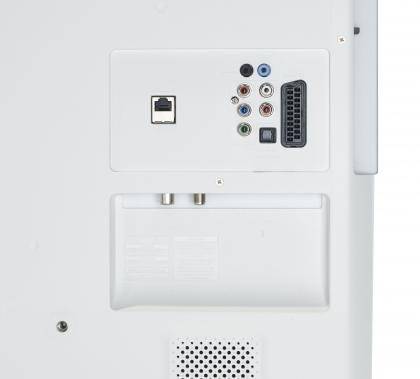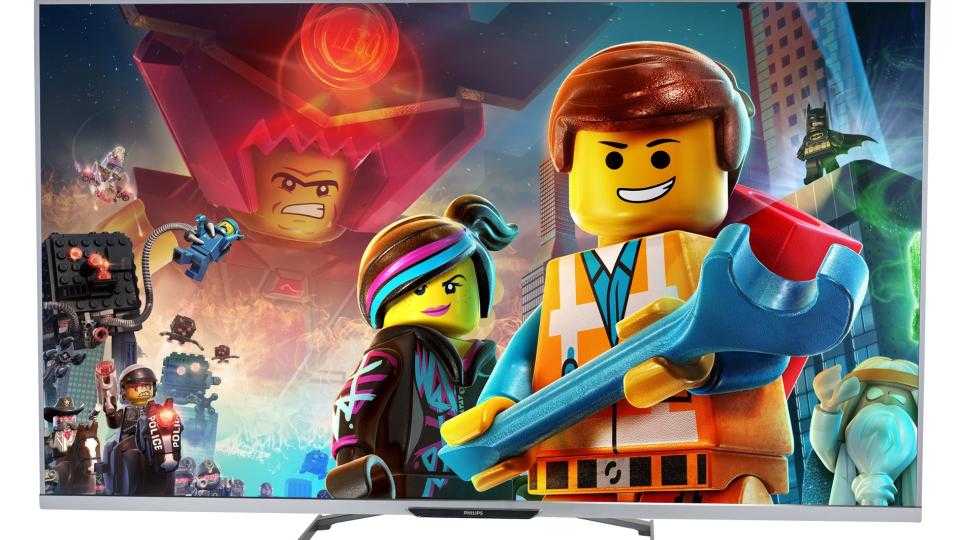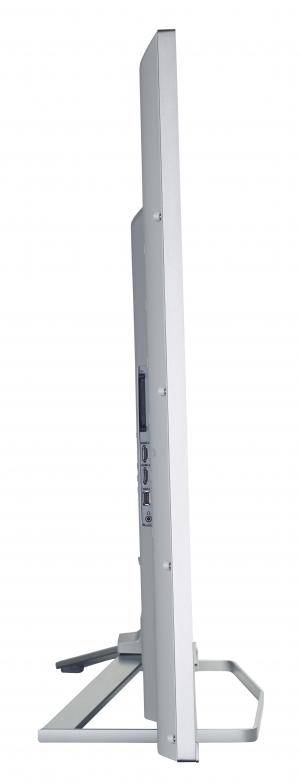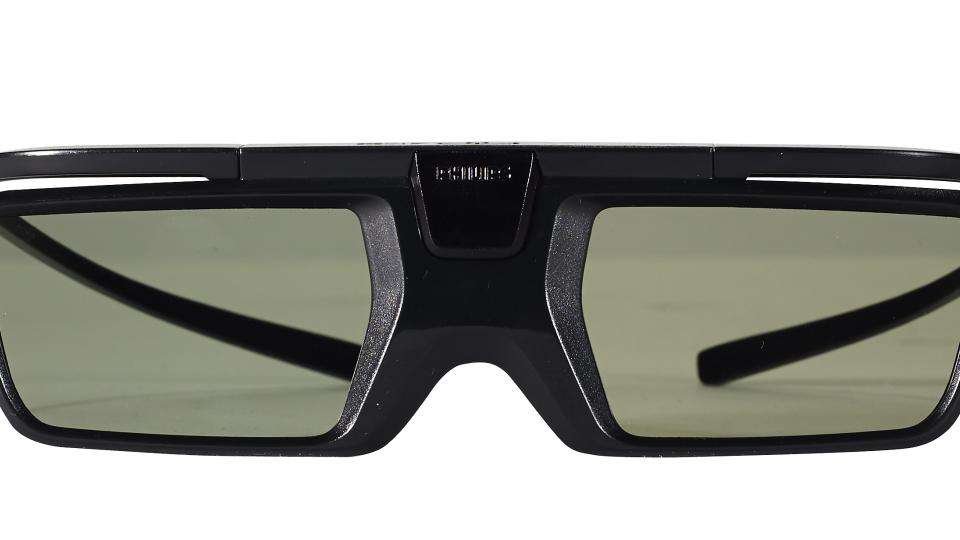For this review we tested the 55in model in the PFS6609 range, but it's also available in 48in (48PFS6609) and 40in (40PFS6609) screen sizes. All models have identical specifications except for their dimensions and power usage. We're confident that image quality will be practically identical across the range.
The PFS6609 is Philips' top-of-the-range Full HD TV for 2014. Available in 55in, 48in and 40in sizes, the PFS6609's super-slim stand and bezel give it a stylish appearance. The ultra-thin bezel also allows the TV to make the most of Philips' unique AmbiLight technology, which uses an array of small LEDs on the back of a TV to shine light on the wall or surface behind the TV. The idea behind Ambilight is that it makes your viewing more immersive and your screen appear idea, we didn’t think it added anything to our overall viewing experience.
On the back of the TV you’ll find plenty of connection ports, including four HDMI ports, component and SCART inputs, a Common Interface slot, audio inputs and outputs, an Ethernet port and two USB ports for connecting external hard disks and flash drives. Should you prefer, you can connect the TV to your network with its built-in Wi-Fi adaptor.

PICTURE PERFECT?
The PFS6609's picture quality was good. Black levels were particularly outstanding, and we measured a black level of 0.07cd/m2 with our colour calibrator. Blacks were truly dark and deep, and there were several moments in our Star Trek test footage where we couldn't tell where the depths of space began and the black bar at the top and bottom of the screen ended. Contrast was also excellent, and we measured a contrast ratio of 1,499:1 on its default settings. This meant there was plenty of detail on show, even during darker night scenes.
Colour accuracy was a little lower than we might expect for a TV of this price, though, and our colour calibrator showed the screen was only displaying 85.2 per cent of the sRGB colour gamut on its default settings straight out of the box. Fortunately, we managed to increase this to a more respectable 94.4 per cent once we'd calibrated the TV by adjusting the colour temperature. As a result, colours looked much richer and deeper than our reference TV and produced a much more pleasing image.
The only thing that suffered was the purity of the whites, as the TV's default brightness was also comparatively low, measuring just 116.57cd/m2. Luckily, this can be easily rectified in the TV's picture settings.
It can be a hassle trying to access the picture settings, though, as there's neither a direct button for it on the remote control nor an obvious shortcut in the TV's main interface. Instead, you have to press the Home button, go to Setup and then select TV settings, which is a pain if you want to keep making adjustments.

Once you've found the menu, there are plenty of settings you can adjust. We used the Standard picture mode for our testing, but all eight picture modes can be customised with the TV’s comprehensive menu. These include basic colour, contrast and sharpness settings, as well as more advanced colour enhancement and colour temperature options (the Standard picture mode also includes a custom colour temperature mode which lets you adjust individual colour and offset values), gamma, dynamic black and video contrast.
You can also adjust Philips' Super Resolution feature, which boosts sharpness and detail in lower-quality sources. We found Super Resolution didn’t make too much of a difference when watching ordinary TV channels, but the noise reduction and MPEG artefact reduction settings were effective at creating a smooth image.
Unsurprisingly, HD channels looked much better than standard definition channels, but we still found that there was a blurring ‘ghost’ effect when we watched sports. Turning off HD Natural Motion stopped this effect. HD Natural Motion is Philips’ frame interpolation setting, and it artificially inserts extra frames to eradicate judder and jerky camera movements.
You'll want to enable HD Natural Motion when watching films, though, as we found our Blu-ray test footage looked a little jerky when it was turned off. Camera pans in Star Trek were smooth, but not unnaturally so, and we didn't see any signs of distortion around fast moving objects as we did when we turned it off completely.

UNWANTED BORDERS
The PFS6609 comes with two pairs of active shutter glasses in the box and we didn’t see any signs of crosstalk, which is good, but the depth of the 3D image produced an unwanted side effect that we don’t expect to see on a TV of this price. When we activated 3D we saw vertical black bars around the edge of the picture, and these chopped off around 10mm from the sides. These bars increased in width even larger when we set 3D to its maximum depth, but even the lowest setting produced a noticeable black border round the image. This not only affects the AmbiLight effect, it's also unpleasant to see.

We’re not fans of Philips' smart TV interface, either. We also found it very clunky to use as the smart hub obscures half of the screen when it's in use, and it’s not obvious what most of the apps do. Thankfully, you can change the order of the apps to make your favourites more accessible.
There's a sensible range of preinstalled apps, including BBC iPlayer, Netflix, BlinkBox, YouTube, Spotify, Facebook, Twitter, Picasa and a web browser, but that's more or less it. The Philips apps are particularly poor, as Cloud TV just has streaming services you’ve never heard of, and TV on Demand only has short news clips rather than actual TV shows. The only one you’re likely to use is Cloud Explorer, which lets you connect your Dropbox account to the TV and stream files from there. The PFS6609 has good file support, including AVI, MKV, MP4, MOV and WMV video files, AAC, MP3, OGG and WMA audio files and JPEG, BMP, GIF and PNG image files.
The Philips 55PFS6609 isn't perfect, but at £1,000, it's a lot cheaper than other top-end 55in TVs and its image quality is superb. The PFS6609 needs only a small amount of tweaking to get the best out of it. We wish it had better smart content and a more user-friendly interface, but if you want a large, stylish TV, the Philips 55PFS6609 is a good choice.
|
Hardware |
|
Screen size |
55in |
|
Native resolution |
1,920x1,080 |
|
Aspect ratio |
16:9 |
|
3D |
Active |
|
Contrast ratio |
N/A |
|
Brightness |
350cd/m2 |
|
Speakers |
20W |
|
Video inputs |
4x HDMI, SCART, component |
|
Audio inputs |
3.5mm stereo |
|
Audio outputs |
Optical S/PDIF, headphone |
|
Tuner |
Freeview HD, DVB-S2 |
|
Streaming TV services |
BBC iPlayer, BlinkBox, Netflix |
|
Media Streaming |
Miracast |
|
Dimensions |
675x1082x280mm |
